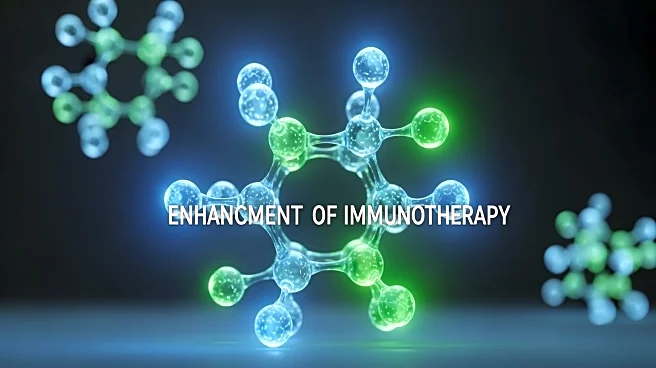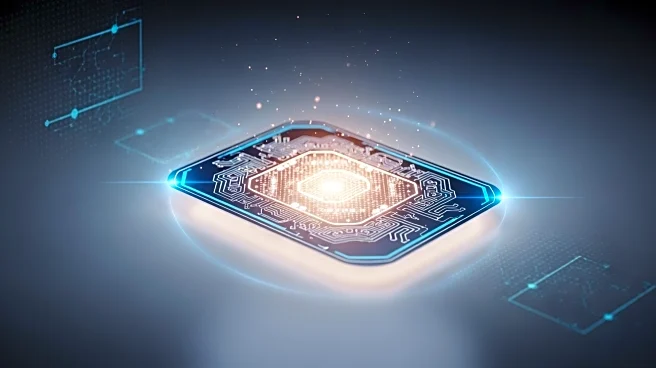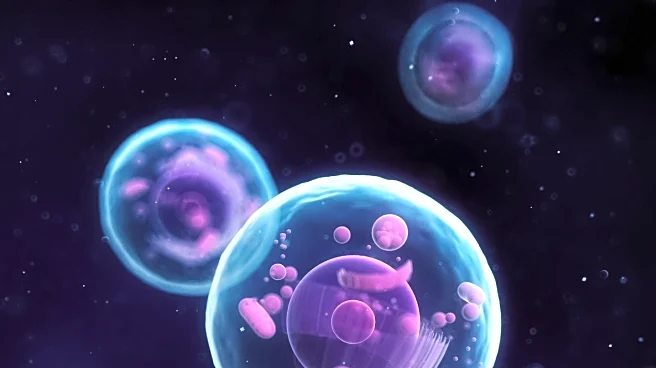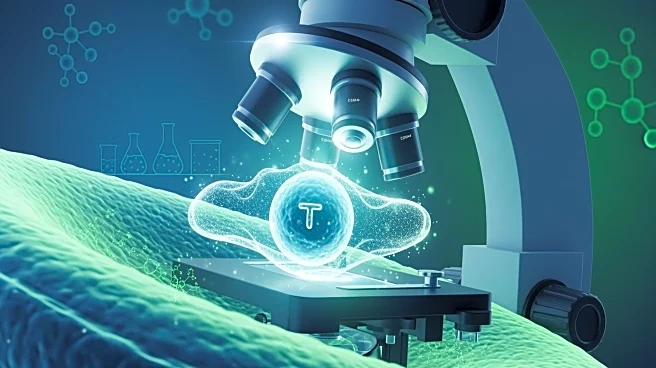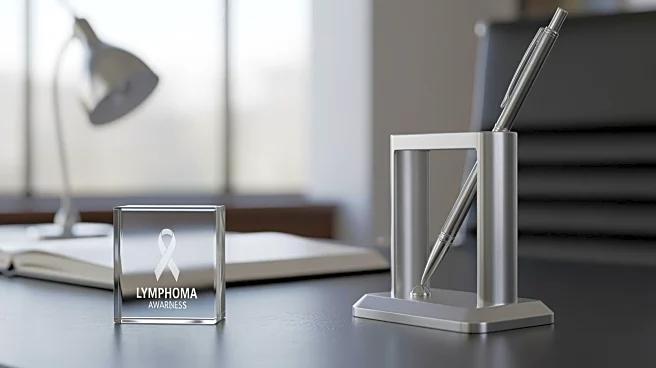What's Happening?
Researchers have developed a new technique called PATCH (proximity amplification and tagging of cytotoxic haptens) that uses a porphyrin–zirconium catalyst for proximity labeling in deep tissue. This system
allows for the spatial control of protein labeling with synthetic antigens, enhancing the activation of T cells. The technique involves the use of nanozymes that label proteins with biotin probes under red light or ultrasound, and fluorescein-based probes that become immunogenic when linked to proteins. This method has shown promise in promoting TCR activation and eradicating solid tumors in mice.
Why It's Important?
The development of PATCH represents a significant advancement in the field of immunotherapy. By enabling precise control over protein labeling, this technique can enhance the effectiveness of T cell activation, which is crucial for targeting and eliminating cancer cells. The ability to spatially control immune responses could lead to more targeted and effective cancer treatments, reducing side effects and improving patient outcomes. This innovation also opens up possibilities for controlling signaling in other immune cells, potentially broadening the scope of immunotherapy applications.
